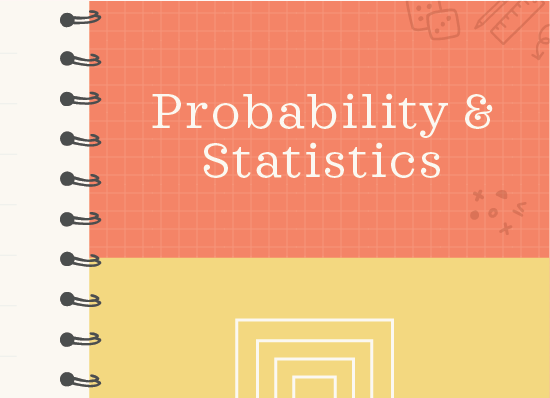Permutations and combinations
What is a permutation?
In order to answer many probability questions, we need to understand permutations and combinations.
A permutation is the number of ways you can arrange a set of things, and the order matters.
Hi! I'm krista.
I create online courses to help you rock your math class. Read more.
The formula for a permutation is
???_nP_k=\frac{n!}{(n-k)!}???
where ???n??? is the total number of items we have, and ???k??? is the number of items we want to arrange.
The difference between permutations and combinations, and how to calculate both
Take the course
Want to learn more about Probability & Statistics? I have a step-by-step course for that. :)
Permutation example problem
Example
I have ???4??? scoops of ice cream: ???1??? chocolate, ???1??? strawberry, ???1??? vanilla, and ???1??? mint. I want to eat only ???3??? of the scoops. How many different ways can I eat ???3??? of the scoops if I consider both which scoops I eat and the order in which I eat them?
This is a permutation question, since I care about the order in which I eat the scoops. There are ???4??? total scoops, but I only want to eat ???3??? of them. Therefore, the number of ways I could eat three of the scoops of ice cream is
???_nP_k=\frac{n!}{(n-k)!}???
???_4P_3=\frac{4!}{(4-3)!}???
???_4P_3=\frac{4!}{1!}???
???_4P_3=\frac{4\cdot3\cdot2\cdot1}{1}???
???_4P_3=4\cdot3\cdot2???
???_4P_3=24???
There are ???24??? different ways that I could eat ???3??? of the ???4??? scoops. For example, chocolate-strawberry-vanilla would be ???1??? of the ???24??? options, but since order matters, chocolate-vanilla-strawberry would be another option.
On the other hand, a combination is the number of ways you can arrange a set of things, but the order doesn’t matter. The formula for a combination is
???_nC_k=\frac{n!}{k!(n-k)!}???
where ???n??? is the total number of items we have, and ???k??? is the number of items we want to choose. Sometimes people write ???_nC_k??? as
???\binom{n}{k}???
which is called the binomial coefficient, and read as “???n??? choose ???k???.”
So to continue with the example from earlier, chocolate-strawberry-vanilla and chocolate-vanilla-strawberry would not count separately, because we don’t care about the order when we’re talking about combinations. All we care about is which items we picked, so chocolate-strawberry-vanilla and chocolate-vanilla-strawberry would count as the same thing.
On the other hand, a combination is the number of ways you can arrange a set of things, but the order doesn’t matter.
Example
I have the same ???4??? scoops of ice cream: ???1??? chocolate, ???1??? strawberry, ???1??? vanilla, and ???1??? mint. I want to eat only ???3??? of the scoops, and I don’t care about the order in which I eat my ???3??? scoops. How many different combinations of ???3??? scoops can I create?
This is a combination question, since I don’t care about the order in which I eat the scoops. There are ???4??? total scoops, but I only want to eat ???3??? of them. Therefore, the number of ways I could eat three of the scoops of ice cream is
???_nC_k=\frac{n!}{k!(n-k)!}???
???_4C_3=\frac{4!}{3!(4-3)!}???
???_4C_3=\frac{4!}{(3!)(1!)}???
???_4C_3=\frac{4\cdot3\cdot2\cdot1}{(3\cdot2\cdot1)(1)}???
???_4C_3=\frac{4}{1}???
???_4C_3=4???
There are ???4??? different ways that I could eat ???3??? of the ???4??? scoops. For example, chocolate-strawberry-vanilla would be ???1??? of the ???4??? options, but since order doesn’t matter, chocolate-vanilla-strawberry would be the same combination, and wouldn’t count as another one of the ???4??? combinations.






